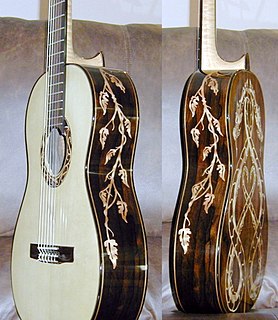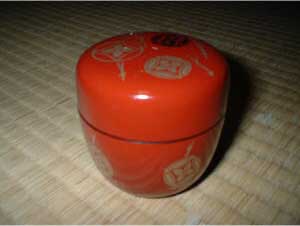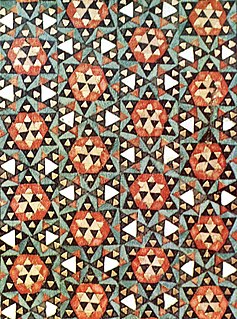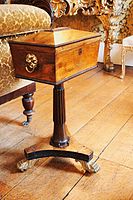
A spoon is a utensil consisting of a small shallow bowl, oval or round, at the end of a handle. A type of cutlery, especially as part of a place setting, it is used primarily for transferring food to the mouth. Spoons are also used in food preparation to measure, mix, stir and toss ingredients and for serving food. Present day spoons are made from metal, wood, porcelain or plastic. There are a wide variety of spoons that are made of a variety of materials and by different cultures for many different uses and foods.

Furniture refers to movable objects intended to support various human activities such as seating, eating (tables), and sleeping. Furniture is also used to hold objects at a convenient height for work, or to store things. Furniture can be a product of design and is considered a form of decorative art. In addition to furniture's functional role, it can serve a symbolic or religious purpose. It can be made from many materials, including metal, plastic, and wood. Furniture can be made using a variety of woodworking joints which often reflect the local culture.

A zarf is a holder, usually of ornamental metal, for a coffee cup without a handle.

Tableware are the dishes or dishware used for setting a table, serving food and dining. It includes cutlery, glassware, serving dishes and other items for practical as well as decorative purposes. The quality, nature, variety and number of objects varies according to culture, religion, number of diners, cuisine and occasion. For example, Middle Eastern, Indian or Polynesian food culture and cuisine sometimes limits tableware to serving dishes, using bread or leaves as individual plates. Cups are not dishes. Special occasions are usually reflected in higher quality tableware.
A caddie is an assistant to a golf player.

Inlay on guitars or similar fretted instruments are decorative materials set into the wooden surface of the instrument using standard inlay techniques. Although inlay can be done on any part of a guitar, it is most commonly found on the fretboard, headstock—typically the manufacturer's logo—and around the sound hole of acoustic guitars. Only the positional markers on the fretboard or side of neck and the rosette around the sound hole serve any function other than decoration. Nacre, plastic and wood are the materials most often used as inlay.

Chaki (茶器) is a Japanese term that literally means "tea implement". In the vocabulary of Japanese tea ceremony, it broadly means (1) any implement used in the practice of chanoyu, and more narrowly means (2) the caddy for the powdered green tea (matcha) used in the tea-making procedures, although usually this implies (3) the caddies used in the procedures for making thin tea (usucha). In this article, the term applies to definition 2.

Tea utensils are the tools and utensils used in chadō, the art of Japanese tea.

Tibetan cuisine includes the culinary traditions and practices and its peoples. The cuisine reflects the Tibetan landscape of mountains and plateaus and includes influences from neighbours. It is known for its use of noodles, goat, yak, mutton, dumplings, cheese, butter, yoghurt and soups. Vegetarianism has been debated by religious practitioners since the 11th century, but is not prevalent due to the difficulty of growing vegetables, and cultural traditions promoting consumption of meat.

Khātam is an ancient Persian technique of inlaying. It is a version of marquetry where art forms are made by decorating the surface of wooden articles with delicate pieces of wood, bone and metal precisely-cut intricate geometric patterns. Khatam-kari or khatam-bandi refers to the art of crafting a khatam. Common materials used in the construction of inlaid articles are gold, silver, brass, aluminum and twisted wire.

A decorative box, or a snuffbox is a form of packaging that is generally more than just functional, but also intended to be decorative and artistic. Many such boxes are used for promotional packaging, both commercially and privately. Historical objects are usually called caskets if larger than a few inches in more than one dimension, with only smaller ones called boxes.
The ESP EX is a series of electric guitars produced by ESP produced in the United States, Europe and in Japan with the ESP logo as part of the ESP Original Series.

A tea chest is a type of wooden case originally produced and used to ship tea to the United Kingdom, Australia and New Zealand. The conventional tea chest is a case with riveted metal edges, of approximate size 500x500x750 millimetres.

A caddy spoon is a spoon used for measuring out tea in the form of dried tea leaves. Traditionally made of silver, they were in common use in the 19th century, when tea was a more expensive commodity. Tea was sometimes stored in elaborate boxes or containers called tea caddies, and these spoons were made to be used with such containers.

Inlay covers a range of techniques in sculpture and the decorative arts for inserting pieces of contrasting, often coloured materials into depressions in a base object to form ornament or pictures that normally are flush with the matrix. A great range of materials have been used both for the base or matrix and for the inlays inserted into it. Inlay is commonly used in the production of decorative furniture, where pieces of coloured wood, precious metals or even diamonds are inserted into the surface of the carcass using various matrices including clearcoats and varnishes. Lutherie inlays are frequently used as decoration and marking on musical instruments, particularly the smaller strings.

Sigma Guitars is a guitar manufacturing brand originally released by C.F. Martin as a line of guitars at affordable prices to compete with the increasing number of imported guitars from Japan and elsewhere. The Sigma line was discontinued by Martin in 2007. The rights to the name was acquired by German company AMI Musical Instruments GmbH, which relaunched the brand with guitars being produced in China.

Goryeo ware refers to all types of Korean pottery and porcelain produced during the Goryeo dynasty, from 918 to 1392, but most often refers to celadon (greenware).

The piha kaetta, also sometimes called 'the Kandyan knife', is a knife or dagger native to the island of Sri Lanka. A typical piha kaetta has a straight-backed blade combined with a drop-point and a curved cutting edge. Many of the finest piha kaetta knives were produced in royal workshops, show very high levels of craftsmanship, and were given to courtiers and the nobility as status symbols.

Louis XVI furniture is characterized by elegance and neoclassicism, a return to ancient Greek and Roman models. Much of it was designed and made for Queen Marie Antoinette for the new apartments she created in the Palace of Versailles, Palace of Fontainebleau, the Tuileries Palace, and other royal residences. The finest craftsmen of the time, including Jean-Henri Riesener, Georges Jacob, Martin Carlin, and Jean-François Leleu, were engaged to design and make her furniture.

























